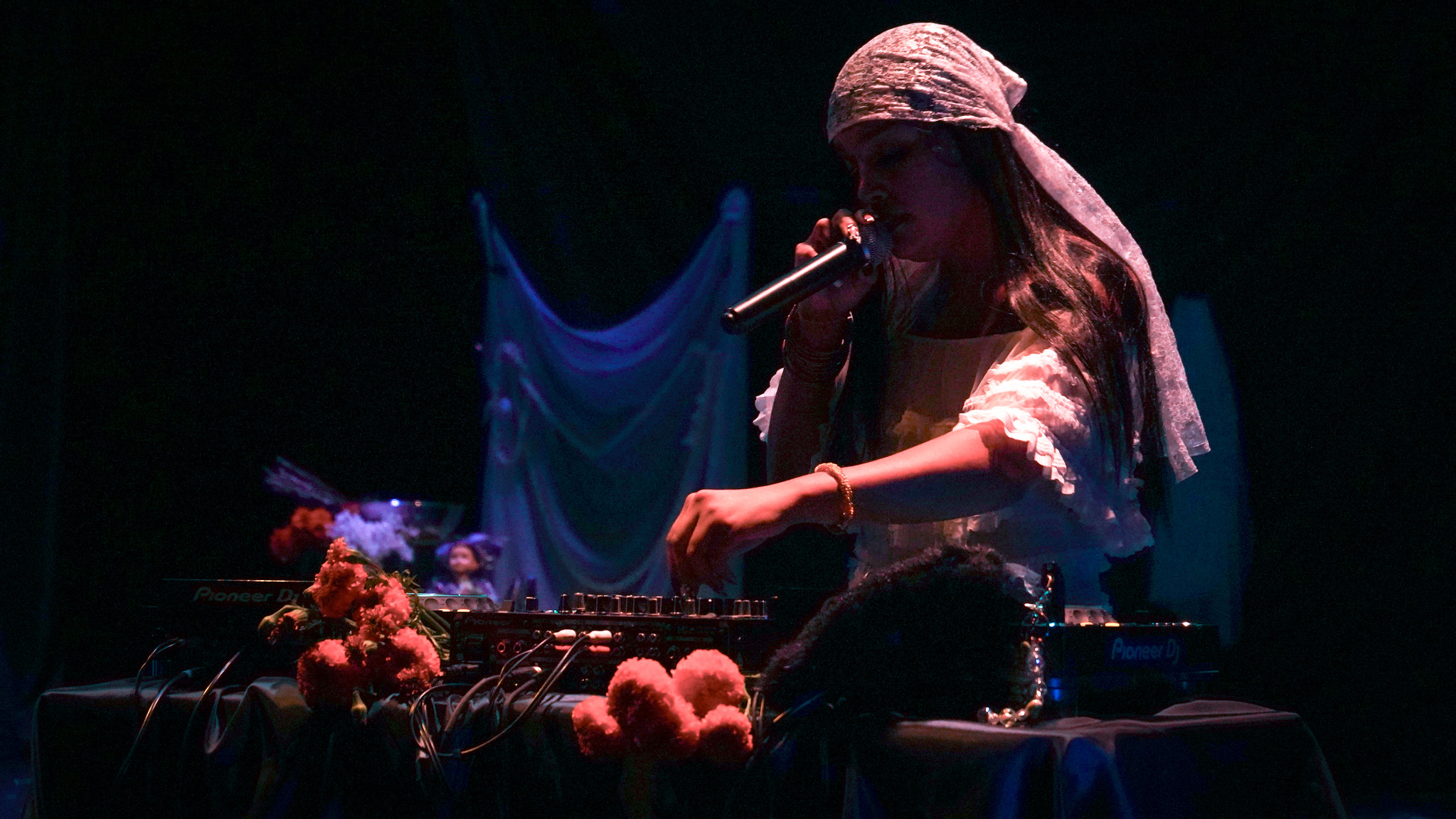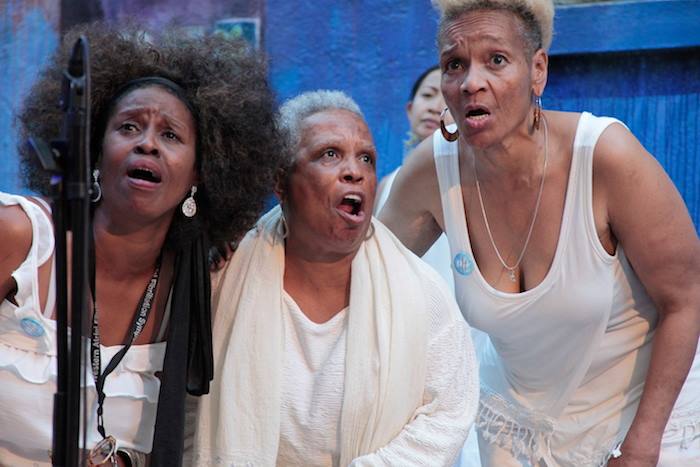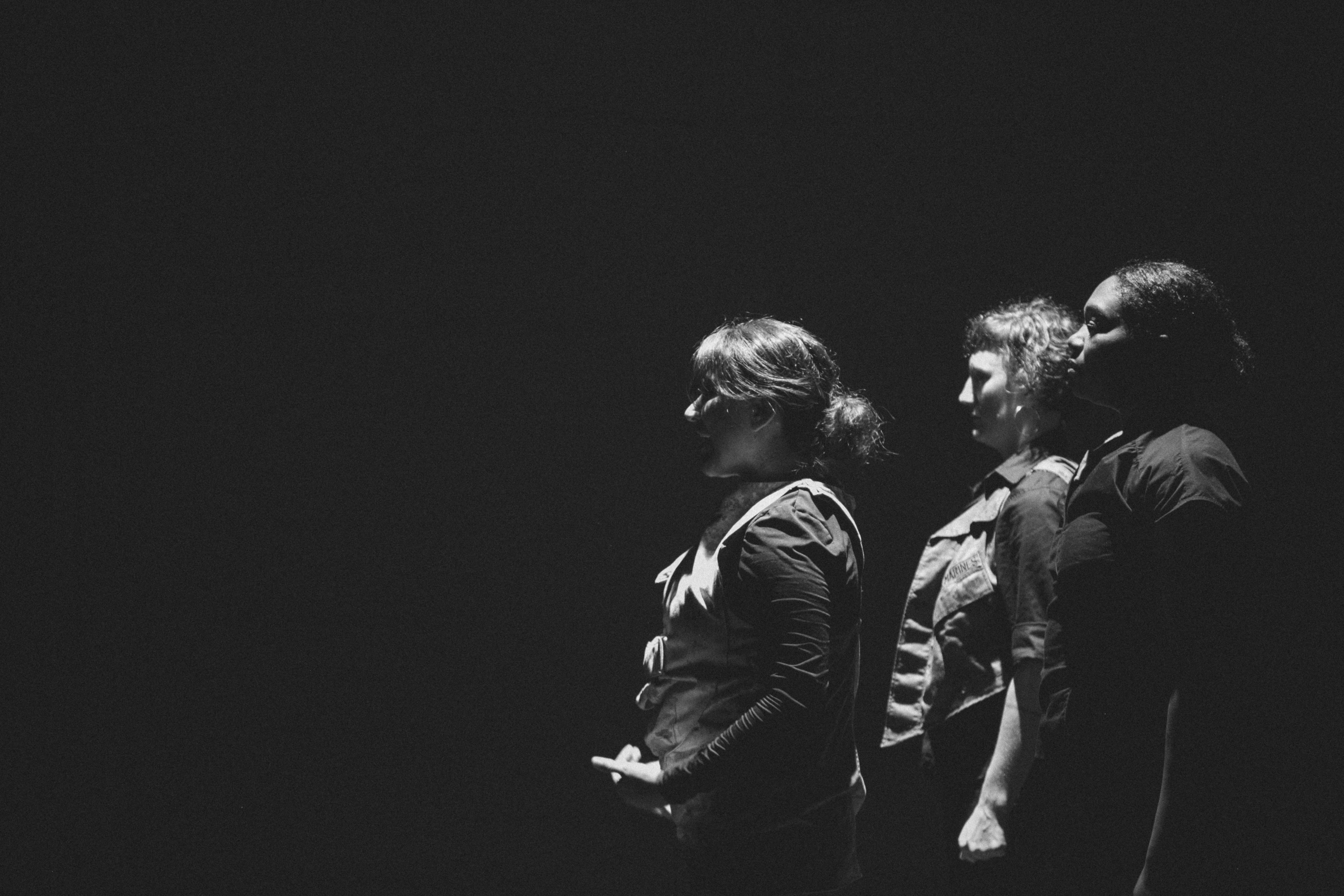REFLECTIONS on Community Engagement
Krista DeNio in conversation with Anne Bluethenthal
Why do we enter the process of Community Engaged Art making?
More importantly, how do we enter the process and what do we do?
In preparation for ART MATTERS: An Introduction to Community Engaged Art, Anne and I reflected on various processes we have or are engaged in as art makers, what brought us to this work and what keeps us here.
I asked Anne to talk with me about what first brought her to this work and the work of Skywatchers, a project initiated by Bluethenthal six years ago.
AB:
“I spent many years teaching, training, creating, and building a repertoire of dances steeped in movement language that I hoped could speak to big issues of our world, through an ensemble that reflected a pluralism of voices. This formed the basis of the great bulk of my artistic life. I call it politically engaged art. As that work grew in scale and subject, my collaborations were more expansive; the communities we built around the work, more far reaching. In the first decade of this century I came to a turning point. In 2001 I collaborated with a Palestinian choreographer on Tears of Rock, a piece about Palestine and Israel, which premiered in the immediate wake of September 11. In 2006, I created a work about genocide—Unsing the Song—for which I partnered with local and international organizations doing work around genocide, gender violence, and HIV. In both cases, our engagement with the involved communities was profound. And yet those relationships ended after the production closed, leaving me with a deep sense of loss and immobility. Slowly I was awakening to the desire to directly engage community in the creation of work in a way that was relationship- rather than product-centered. I wanted to see the work continue, bringing the voices of those directly concerned with the issues on the ground together in an ongoing arts-based action to advance the kind of awareness and social change that we/they collectively imagined.
Translating my passions into direct community engagement was a multi-year process. Stumbling along the way, I initiated numerous projects that failed to come to fruition for various reasons. Meanwhile, I was still making dances for the stage, trying to maintain the economy of the dance company against all odds and in the face of the economic collapse of 2008. I was hemorrhaging financially and energetically, professing an alternative to the market economy and to high venue production, yet not clearly seeing my way out. With several dancers in employ and no particular project in the making, I set out on a project called A Year of Guerilla Art: 50 Random Acts of Dance (see history of Skywatchers), which led me into the Tenderloin neighborhood of San Francisco, where my aesthetic and professional path would be irrevocably altered, where my heart would be lost to the relationships I discovered there, and where Skywatchers was born.”
We discussed some of the issues that make community engaged work go wrong, or have less successful outcomes for the community being engaged. We talked about how we navigate analyzing our work and the work of others—which even when well intentioned, sometimes still misses the mark.
AB:
“We want to distinguish this work from other important kinds of work without professing one’s value over another, but in service of clearly articulating the place for socially- engaged art or community arts practice. We may have a practice as teaching artists, but this is not what we are doing here. We may have practices of audience development and site-specific performance, but these are distinct as well. Here, we are focusing specifically on creating multi-disciplinary performance from a process of dialogue and relationship building that places the voices and lives of the people who live in the Tenderloin community in the forefront. As artists, we are learning to render what arises in these conversations in a way that is beautiful, rigorous, powerful, and true to the urgencies and concerns of the people whose stories are told. And we are committed to whatever work emerges being authored, performed, and witnessed by that community. To the extent that there are outcomes and (in the words of the funders) deliverables, we leave this to the assessment of our co-creators. We, as artists, are learning every day. Aware that it is a privilege to witness and create together, we are interested in
collaborating to discover and invent myriad ways to embody, agitate, celebrate, and make eloquent the talent and creative abilities of those with whom we interact.
In Skywatchers we strive for what community arts theorist Richard Owen Geer calls art “of, by, and for” the collaborating participants. I started, as many politically motivated artists do, by making work that was often of, sometimes by, and sometimes for. To reach with integrity to reflect all three values is an ongoing process, one about which we consistently reflect and hold ourselves accountable.”
We talked about how there are these differentiations in language and labels, in terms of “socially engaged art”, “socially relevant art”, “social practice”, “public art”, “community engaged art”…What artists do within these categories of work can be distinct but also incredibly similar. While understanding the distinctions can be helpful for us, as practitioners, for the funding community, for academia…we agree that categorizing our work is also inherently problematic. All of us, doing any of the work that might fall under these labels are in an unfolding conversation and evolution of the field, together.
AB:
“Words are just funky… I’m more interested in what we’re actually doing on the ground than the semantic debate. Even the word ‘community’ has lost meaning due to the co- opting from the funding world, etc.
I really care about what people are doing in practice. I don’t care as much about the language. I care about the action…the practice. It’s a lifelong work to bring your actions and the product of your labor into alignment with your values.
That’s why we train. That’s why we spend the time, make mistakes, stay humble, stay awake, stay committed to the often painful process of growing and self interrogation that are both the struggle and the beauty, the joy of being human of being an artist.
If people haven’t spent the days, weeks, years in this practice to become eloquent in their daily work, practice and then step back and evaluate: Was that my colonial mind or was that my free mind?—Why would we expect to hit it on the mark the first time?
This is part of the commodified mind. We think we can get it right the first time and if it’s harder than that, we think it’s not worth it. But ahh, that’s where the joy comes in. And the opportunity for deepening of trust and relationship.”
These are just a few of the things we’ll consider and discuss in ART MATTERS, as we look at case studies from various community engaged artists, projects and practices. This intensive is part of our ongoing effort as artist educators and folks working toward best practices in community engaged work, to build community within and amongst those of us grappling with these concerns and realities in the field.
AB:
“What’s interesting to me about the class is working with artists who are on the one hand very committed to their own arts practice and becoming ever more eloquent in their own disciplines and wanting to understand how to use that art in relation to the greater issues of our world.
Specifically in this class, to think about how artists locally, nationally and internationally are doing that through engagement with communities.
And to acknowledge that there are many ways to do the former, to do work that is politically and socially engaged, but we are really delving into a subset of that which has to do with relational art.”
Share This!
More Good Stuff
Ātl Verde: "Ātl," the Nahuatl word for water, symbolizing the river flowing through my evolution—connecting past, present, and future. This piece reflects my journey as
by Krista DeNio, Skywatchers Artist Facilitator **NOTE: The names of individuals in this post have been changed for confidentiality. It all started with having one another’s
Emotional labor is not unlike physical labor. I build muscles through repetition to lift to




